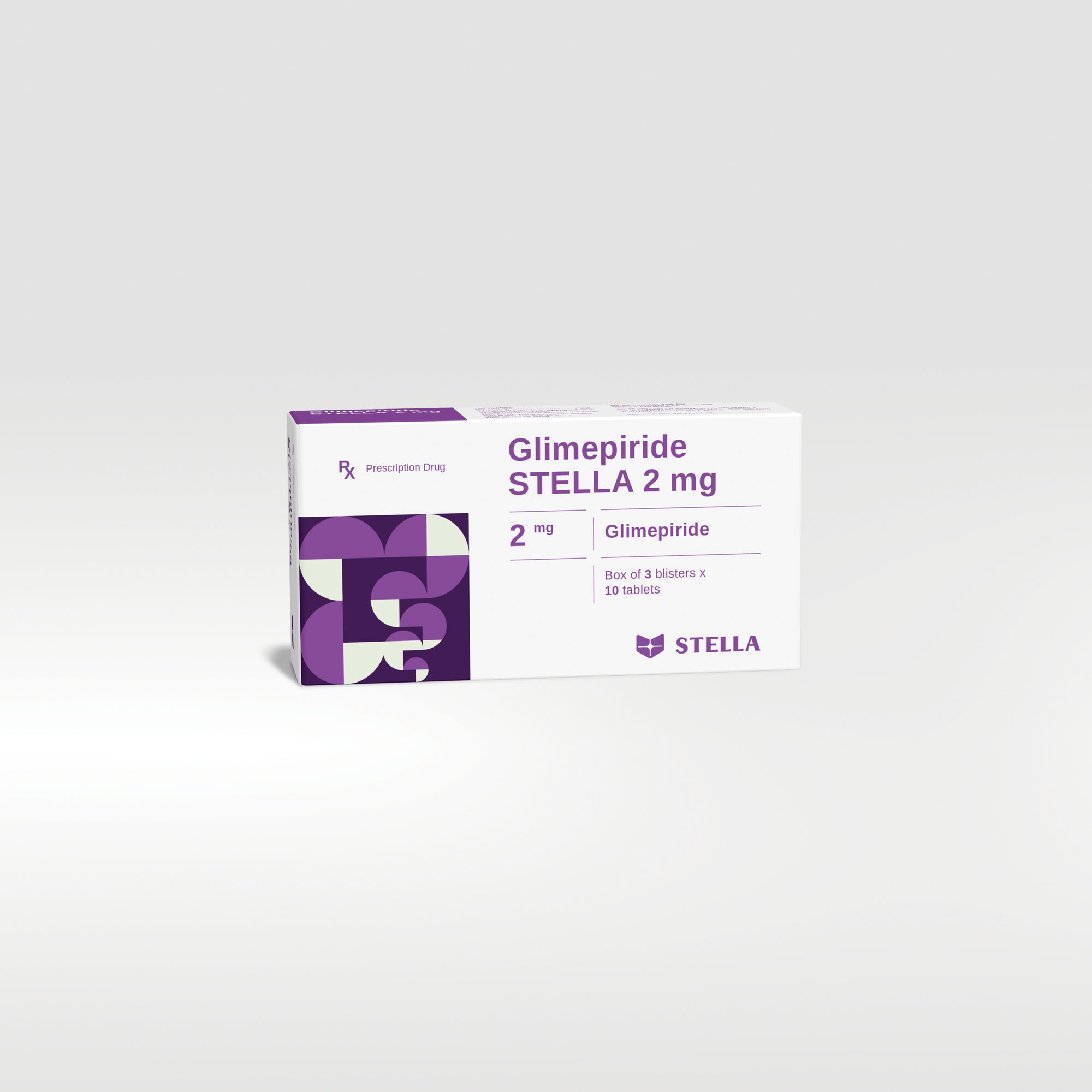Indications
- Glimepiride is indicated as an adjunct to proper dietary management and exercise to lower the blood glucose in patients with type 2 diabetes whose hyperglycemia cannot be controlled by diet and exercise alone.
- Glimepiride may be used in combination with metformin and insulin.
Dosage
- In principle, the dosage of glimepiride is governed by the desired blood sugar level. The dosage of glimepiride must be the lowest which is sufficient to achieve the desired metabolic control.
- Glimepiride must be taken at the times and in the doses prescribed. Mistakes, e.g. forgetting to take a dose, must never be corrected by subsequently taking a larger dose.
- The initial and the maintenance doses are set based on the results of regular checks of glucose in blood and urine. Monitoring of glucose levels in blood and urine also serves to detect either primary or secondary failure of therapy.
- If necessary, the daily dose can be increased. Any increase should be based on regular blood sugar monitoring, and should be gradual, i.e., at intervals of one to two weeks, and carried out stepwise, as follows: 2 mg – 3 mg – 4 mg – 6 mg, and in exceptional cases 8 mg. Only some patients benefit from daily doses of more than 6 mg.
- Timing and distribution of doses are to be decided by the physician, taking into consideration the patient’s current lifestyle. Normally, a single daily dose of glimepiride is sufficient. This dose should be taken immediately before a substantial breakfast or if none is taken immediately before the first main meal. It is very important not to skip meals after taking glimepiride.
- As the control of diabetes improves, sensitivity to insulin increases; therefore, glimepiride requirements may fall as treatment proceeds. To avoid an excessive reduction in blood sugar (hypoglycaemia), a timely dose reduction or cessation of glimepiride therapy must be considered.
A dose adjustment must also be considered whenever the patient’s weight or lifestyle changes, or other factors causing an increased susceptibility to hypoglycaemia or to an excessive increase in blood sugar levels (hyperglycaemia) arise.
- Treatment with glimepiride is normally a long-term therapy.
Changeover from other oral antidiabetics to glimepiride
- There is no exact dosage relationship between glimepiride and other oral blood-sugar-lowering agents. When substituting glimepiride for other such agents, the initial daily dose is minimum dose; this applies even in changeovers from the maximum dose of another oral blood-sugar-lowering agent. Any glimepiride dose increase should be in accordance with guidelines given above. Consideration must be given to the potency and duration of action of the previous blood-sugar-lowering agent. It may be necessary to interrupt treatment to avoid additive effects which would increase the risk of hypoglycaemia.
Use in combination with metformin
- Whenever blood sugar levels cannot be controlled adequately with the maximum daily dose of either glimepiride or a metformin containing antidiabetic alone, both medicines may be used concomitantly. In such cases, the dose of the established medicine remains unchanged. Treatment with the additional medicine is started at a low dose, which depending on the desired blood sugar level, then may be increased gradually up to the maximum daily dose. Combined treatment should be initiated under close medical supervision.
Use in combination with insulin
- Whenever blood sugar levels cannot be controlled adequately with the maximum daily dose of glimepiride, insulin may be given concomitantly. In this case, the current dose of glimepiride remains unchanged. Insulin treatment is started at a low dose, which is subsequently increased stepwise according to the desired blood sugar level. Combined treatment should be initiated under close medical supervision. Glycosylated hemoglobin levels (HbA1c) should be performed to monitor the patient’s response to therapy (i.e. every 3 – 6 months).
- Short-term administration of glimepiride may be sufficient during periods of transient loss of glycemic control in patients usually controlled well on diet and exercise.
Patients with impaired renal function may be more sensitive to the glucose-lowering effect of glimepiride.
In case of hepatic impairment and renal impairment
- Starting dose of the drug must be cautious to avoid excessive hypoglycaemic reactions. The initial dose is only 1 mg once daily. The dose may be increased if fasting blood glucose levels remain high. Patients with Clcr < 22 ml/min, usually use only 1 mg once daily, no need to increase more. No studies were performed in patients with hepatic impairment.
- No experience has been gained concerning the use of glimepiride tablets in patients with severe impairment of liver function or dialysis patients.
- In patients with severe impairment of renal or liver function, a changeover to insulin is recommended, especially to achieve optimal metabolic control.
Usage
- Glimepiride STELLA 2 mg tablets must be swallowed with sufficient amount of liquid (approx. ½ glass), not chewed.











